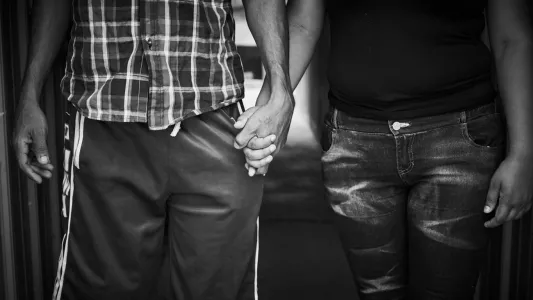Human evolution is tightly related to migration. The first humans were nomads, they used to look for a better climate, food, and hunting territory. Even before we were completely human, the different human species, our ancestors, moved from Africa to other parts of the world. If human mobilization is as natural as human evolution, why is migration stigmatized nowadays? Photographer Christina Simons (@christinasimons) challenges paradigms and negative uninformed perceptions about migrants in her project Running to Nowhere.

The project started in 2015 when Simons was on an assignment for Doctors Without Borders. While working for the DWB in Tenosique and Ixtapec in Mexico, she encountered many people migrating to the US. Like all of us, Simons knew about migration from Mesoamerica, but getting to know migrants in person and forming a connection with them, led her to analyze the circumstances that push people to leave their homes and risk their lives on a road towards a far unknown place.
Simons chose Running to Nowhere to depict the different aspects of the migration experience. Initially, people do not leave their homes, lives, behind peacefully. They are often running away from different circumstances, like violence, hunger, persecution, abuse, etc. The goal of going away is pursuing a better life, but before settling in, the road has a high risk of encountering violence, rape, human trafficking, among other dangers. When they finally arrive in the US, there are no promises of a better life. Simons says, “If that is where they are running to, it isn’t a destination at all, but rather nowhere, somewhere in between but not ever really arriving.” The author says if nowhere is better than home, then that should tell us something about these people’s situation before the journey.
Unlike much information we receive about migration issues, the author takes a personal approach. Instead of communicating only facts, we see actual human stories, we meet individuals. It is important to show that people come from somewhere, and the author intends to reveal those places, circumstances behind the faces in the pictures. To communicate the stories, the photographer takes a holistic approach to explore all the factors involved in the decision migrants make. Simons tells us one of the stories that impacted the series the most.
© Christina Simons
“Sweet Rebecca, ran around me the way a 1 year old – nearly 2 years old - should. Curious, innocent, and playful. Untainted by the world she had left behind. It struck me then that that is how we all start. Wherever that might be, our surroundings shape and inform who we become. It is what can make us kind and compassionate people, or it can make us angry and violent human beings. Rebecca’s mother was making the journey North to the United States to give Rebecca a chance of an environment without violence, tragedy, and fear but one of safety and nurturing encouragement.”
© Christina Simons
To Simons, documenting is a process that begins with gaining the subject´s trust. Especially when communicating with people who are going through a dangerous journey. For the author, documenting starts by knowing each person, forming a connection from mutual understanding, and then finding the right moment to start shooting. To Simons is not about taking, but about sharing, her life and her purpose as a photographer with the people in the pictures. As a documentarian, the author sees the process as a privilege that requires integrity and honesty.
Migration from Mesoamerica and other parts of the world arises from different circumstances, from different environments, but the goals and needs of migrants are similar. Someone who migrates, does it to run to a better place, towards a more dignified life. Simons intends to “create a clear vision of how and why this is happening by focusing on the individuals who are impacted and suffering through this crisis.”
Running to Nowhere
strives to understand the why of migration, but most importantly understand the humans who are migrating.
© Christina Simons
Christina Simons is an Icelandic-American photographer, based in Australia. Her work focuses on human rights and civil liberties. Her different projects have been exhibited throughout the world: Australia, United States, England, among others. Simons has collaborated with multiple NGOs, The New York Times and The Guardian UK. Running to Nowhere is an award-winning project.















